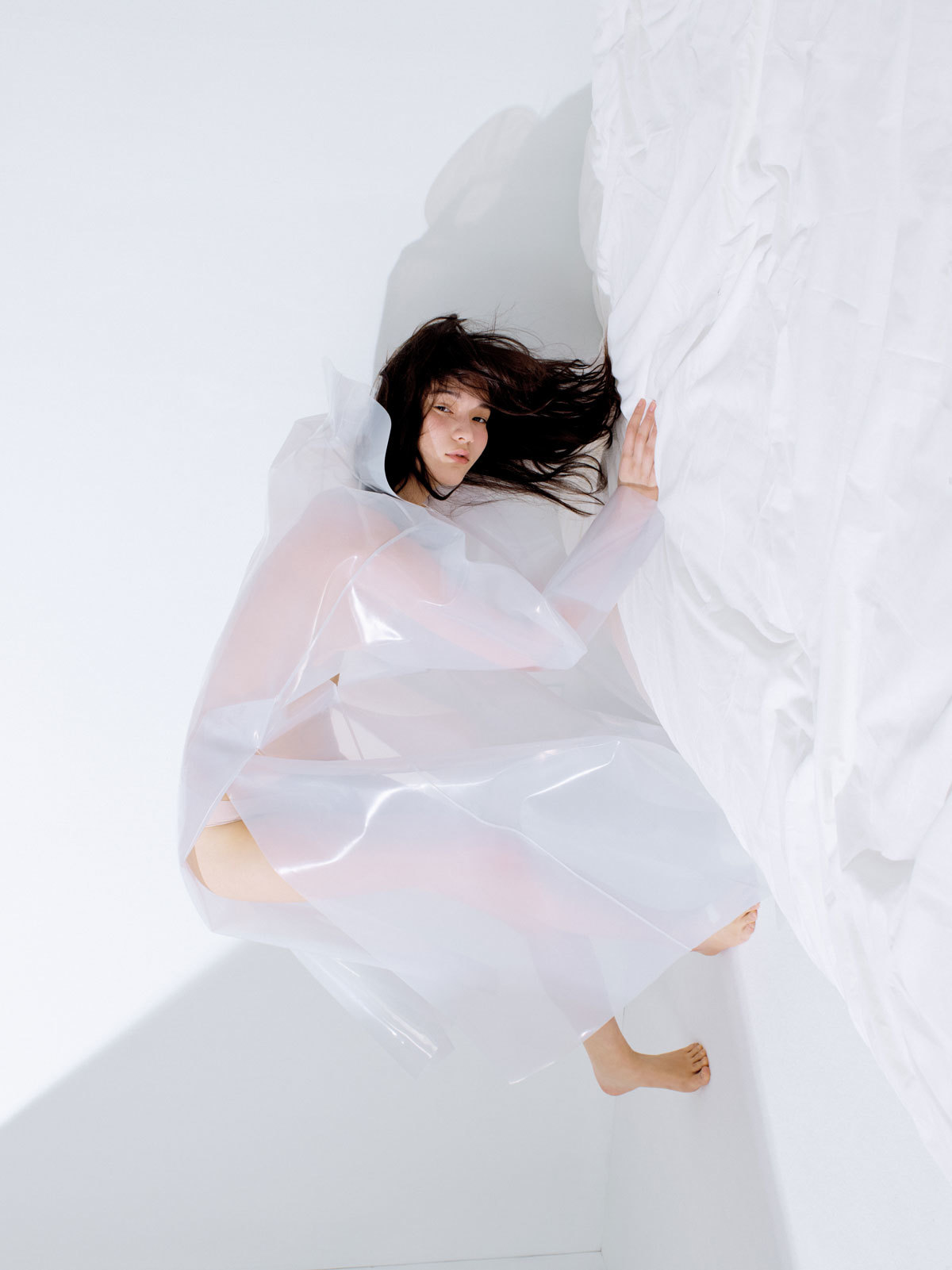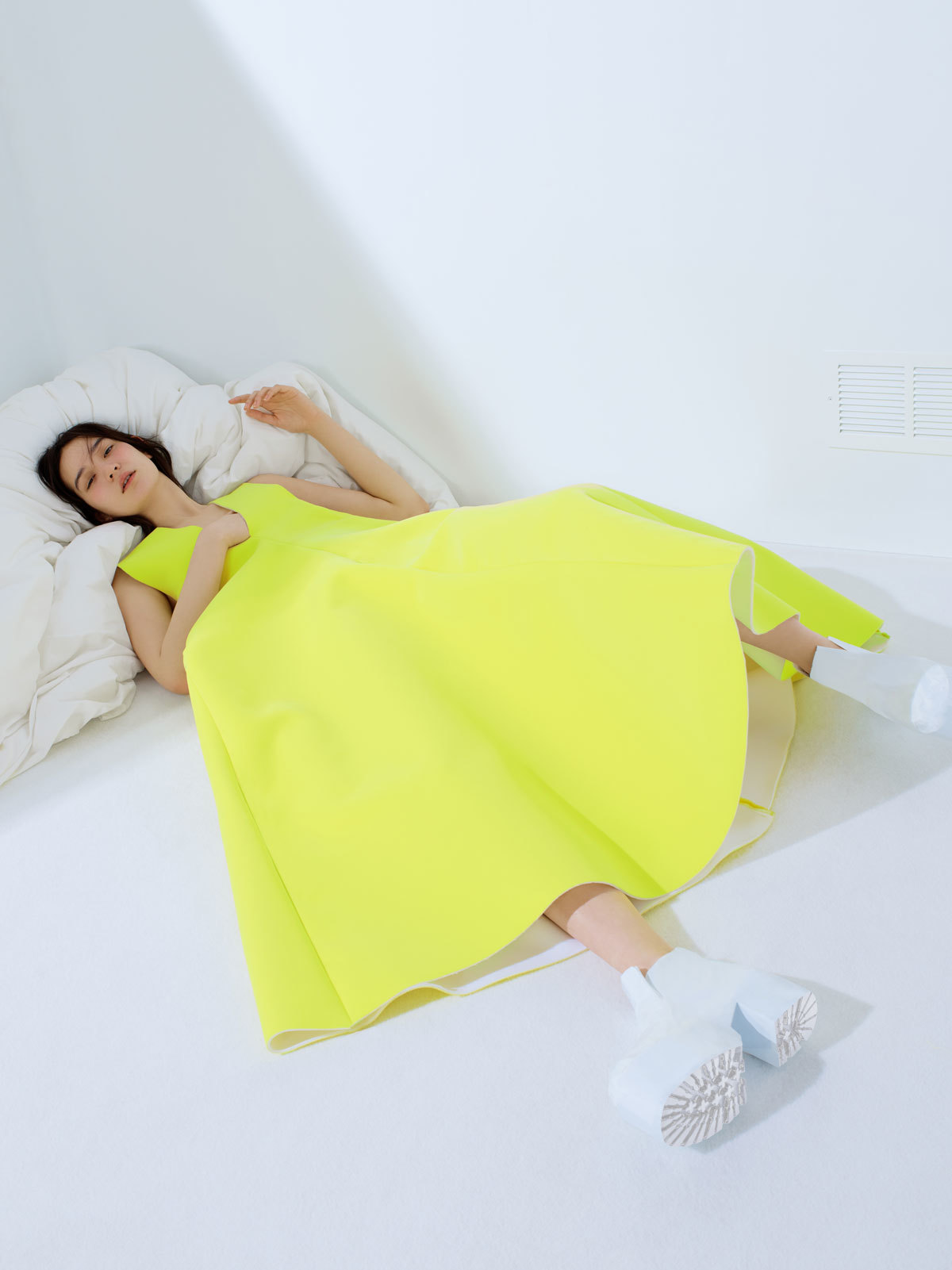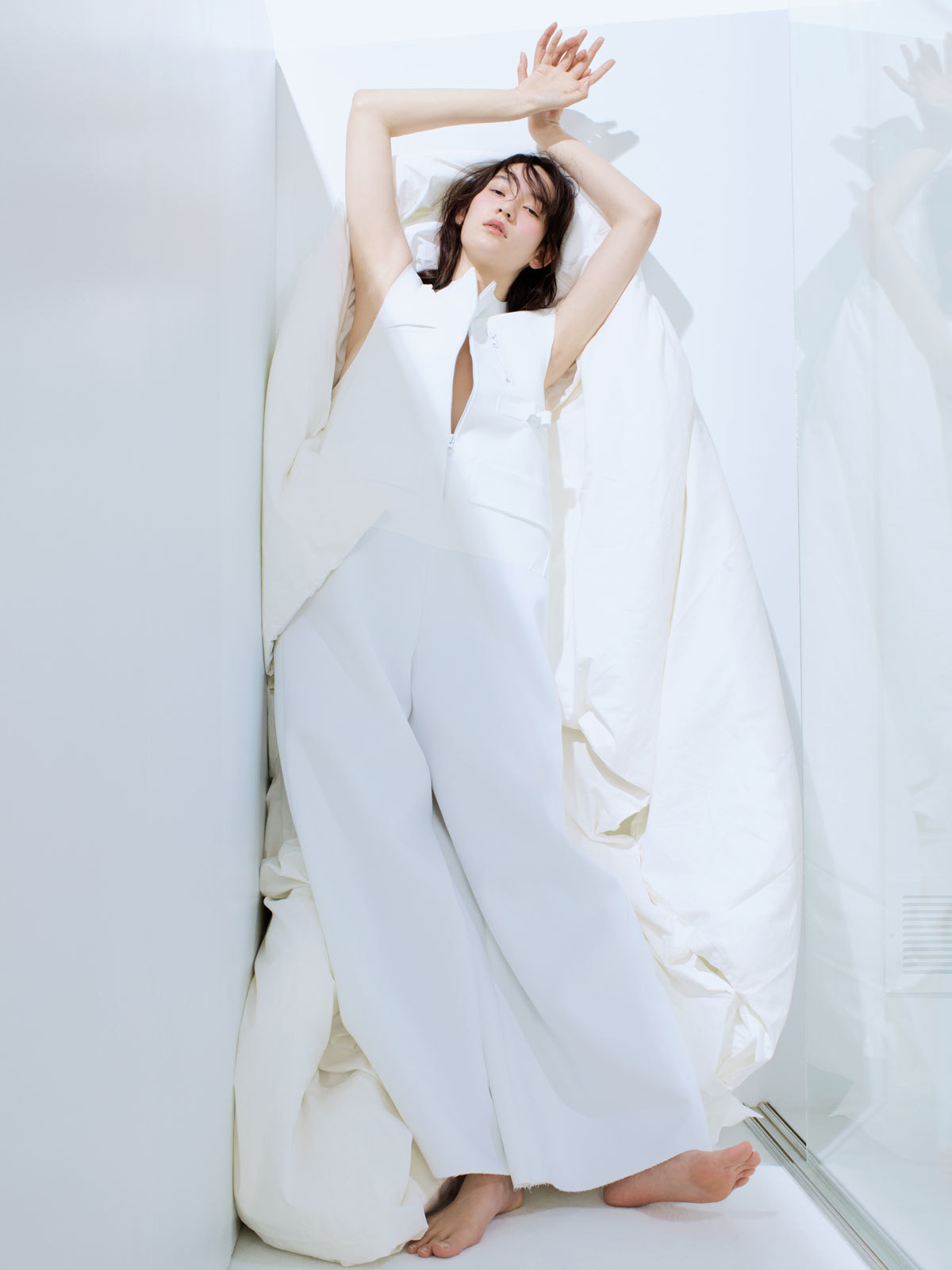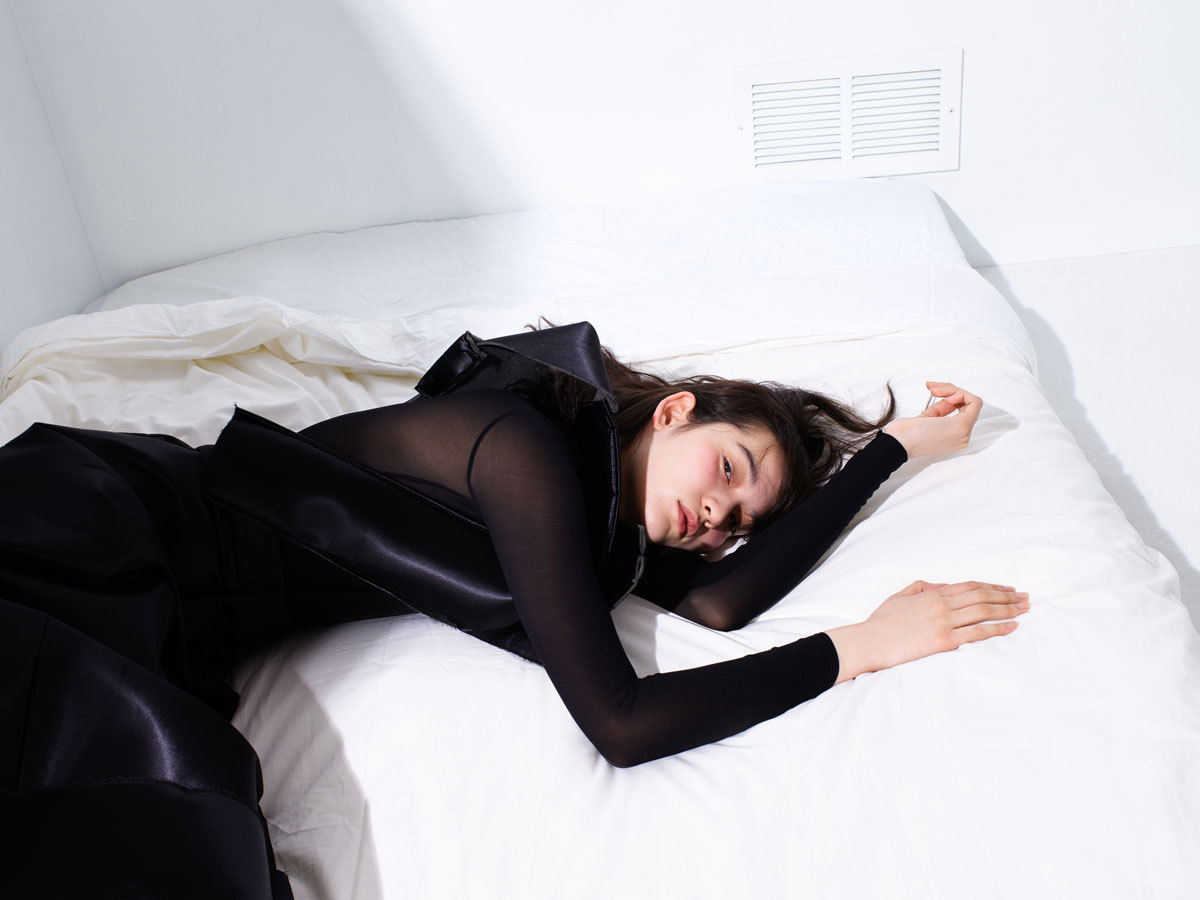How do you build a design house from scratch? It is a question that lingers on in the minds of many young designers, as they slowly build their businesses from the ground up. What if you could have the chance to actually ask the creative director of Céline, Loewe, Louis Vuitton, Givenchy or even Chanel? Melitta Baumeister is one of the few who can grab that opportunity, during the LVMH Prize for Young Designers this week, for which she has been shortlisted.
Since her graduate collection in 2013, Melitta has been exploring materiality in garment construction; pouring liquid into molds to create dresses and delighting in creating optical illusions for the viewer. The German-born designer has a fascination with the relationship between the real and the fake, and together with photographer Paul Jung creates a world around the Baumeister brand that communicates their vision rather effortlessly. We caught them right off the plane, slightly jetlagged, but more than ready to set up their showroom at Avenue Montaigne.

Why did you initially apply for the LVMH Prize? What attracted you to it?
Melitta: There aren’t many competitions at the moment at this scale that link fashion and business together so strongly. It’s definitely the most exciting competition for my generation.
From all the designers who are on the judging board, whose mentorship would you look forward to?
M: We would definitely benefit from the mentorship of all the designers on the judging board. To see ourselves in their diverse perspectives would be invaluable.
How has the progression of your brand been, since you graduated from the MFA Fashion at Parsons up to now?
M: Each season since graduating has been a huge lesson. The MFA was really helpful in honing in on my vocabulary and direction, and learning to ask the right questions. Running the business season to season is a whole other learning thing though. The MFA was only the beginning, it’s been a real adventure. It’s been helpful to have the opportunity to be developing a brand and seeing it evolve and transform, while understanding and creating a healthy business, which is an exciting project in itself.

In the LVMH Prize introductory video, Delphine Arnault states that there are ‘so many questions that a young designer can have’. What are yours?
M: How to have more time in the design process, and how to build a design house from scratch.
Paul: How we can develop and nurture a supportive and strong work environment in the long run, and How does one live in three time zones simultaneously?
What would you do with €300.000?
P: Hire talented people.
M: Deeper research with wider scope.
You said in an interview: “We remind each other to stay true to what our vision is, it is easy to get influenced by reactions that people have, or what others think is right or wrong to do.” I would love to hear your thoughts on this in relation with the LVMH Prize.
P: This is definitely a very fine line to walk. We have learned so much from working with different people and observing how our company could be operating, from a design as well as a business perspective. What we’ve come to realise is that we must remind ourselves that to be interesting and relevant is to have our own independent voice. Of course we are not too arrogant to say that we already know everything, but the right mentorship is to nurture and strengthen a core direction.
M: It is necessary to hear the suggestions and criticisms of others, to know what I know for sure. On a business level, we definitely are very curious how we can tie all this together!

Paul, you stated that the visual language of this shoot is a continuation of the kind of things that Melitta and you explore. If you could fit this into three conceptual ideas, what are they?
1. Interaction of self with the environment.
2. Simulacra and simulacrum
3. Material turn
How do you see imagery?
P: Like everything else, the communication of the image is transforming at alarming speeds. The next period, with the development of VR and moving images, the still imagery will be highly developed in such grand scale, with people so fluent in visual vocabulary, that it will be used again for communicating emotions and abstractions of the spirit.
Are you more online or offline people?
P: Just as we are no longer mods or rockers, or listen exclusively to punk or jungle, but an all encompassing generation, we embrace both forms.
M: I’m definitely more of a physical person compared to how Paul works.
P: Yes, I function much easier practically in the virtual world, while Melitta much smoother in the physical realm, though we appreciate the other very much.

Melitta, you once said: “If you really look why and where your interest for certain things are coming from you can see connections and that is where you start to know what your own vision is.” What would you say is the over aching thread that runs through your work?
P: This loop can be compared to the dreaming process, where we are both the creator and the perceiver, director and the audience.
M: I’m still interested in the exploration of form with materials, and how one interacts with this through life.
What are your plans after Paris Fashion Week?
P: Immediately back to exploring for the next season, there is no time to lose!
M: Research for the next season.
Credits
Text Jorinde Croese
Photography and art direction Paul Jung
Model Ranya Mordanova
Hair Lizzie Arneson
Make-up artist Misha Shahzada
Set design Two Hawks Young
Special thanks to Root Studios
